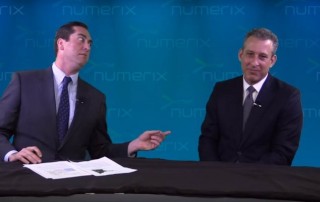The Cost of #Transformation | Numerix Video Blog Series
Understanding FinTech #Transformation: In this THIRD of a five part video blog series Jim Jockle, CMO of Numerix sits down with Paul Rowady, Director of Research at Alphacution to discuss the concept of #Transformation. Jim and Paul provide their perspectives on the latest examples of transformation they’re observing in the financial services industry specifically around the cross section of IT spending trends, software vs hardware investment, human capital expense, IT infrastructure, data management and risk analytics innovations. The five segments cover: Defining #Transformation within Financial Services Quantifying #Transformation The Cost of #Transformation #Transformation and TCO: Hewlett Packard Enterprise & Deutsche Bank Case Study Investing in #Transformation: What’s the ROI? Video 3: The Cost of #Transformation Jim Jockle (Host): Hi, welcome back to Numerix video blog, I'm your host Jim Jockle with Paul Rowady Director of Research at Alphacution Research. Paul Rowady (Guest): Thanks, Jim. Jockle: Paul, we’ve been talking about the spend and the investment, Software, Hardware, Opportunities, as it relates to infrastructure as a service, so let’s talk about [...]







